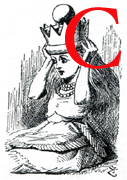
harlotte Mary Mew, was a late Victorian and early Modernist poet and writer. The oldest of seven children to talented parents who were Bloomsbury and Hampstead architects, she found her life blighted by a sad succession of siblings who either died early or were deemed in need of asylum care/incarceration. Only her sister Anne remained with her, and the two apparently made a pact to never marry or have children. Biographers note an early passionate attachment to the headmistress of Gower Street School in London - where separate entrances for Girls and Boys led to separate classrooms, all typical of the period and much later. While such early experiences may well influence a sensitive nature, and work together with genetic endowment, any later perceived lesbian tendencies still require further analysis.
A life orientation - here lesbianism - may change over the years; may change its preferred object or partner choice, on grounds of age, education, culture and taste, even gender with lesbian becoming bisexual and vice-versa. Dominance may also change, especially from active to passive with advancing years. No single parameter, such as the individual’s own supposed gender preference, can fully and adequately describe that individual’s sexual orientation. The object-choice is required as a second axis. Alternatively, the second axis may be selected as Active-Passive. Sigmund Freud, with his generation’s in-built masculine prejudices, somewhere says that “in every relationship there must be a superior and a follower”, implying a passivity of one towards the other.
Mew, despite her firm preference for other female company and her adored sister, also assumed an Active-Superior mode of her times when she dressed accordingly. Charlotte not only dressed as a man, but as an ‘enhanced’ man or “dandy” (xxxx L18, man of ostentatiously elegant or fashionable dress), if not quite a “masher” (L19, fashionable young man, who may make unwelcome sexual advances to women). Turning to Charlotte’s little-known sister Anne, it is clear that she shared with her sister one axis of Lesbianism, viz. object-preference, since she knew Charlotte was female no matter what the attire. On the Active-Passive axis, however, Anne was a very different lesbian, being the docile passive partner to her flamboyant sister’s trail-blazing Active. Both sister’s were chronically depressive - melancholic in the terminology of their day - and for Charlotte the male attire could have been a despairing but tangible contact with the departed father. [Dandies and mashers were frequently depicted and gently ridiculed in class="book">Punch cartoons by the artist-illustrator George du Maurier during the period c.1870 to c.1890]
Mew in 1894 published in the Yellow Book, popular also with Oscar Wilde. Her poetry came slowly from c.1900. The major collection The Farmer’s Bride of 1916, which appeared in America in 1921 as as Saturday Market, was written from a strongly masculine stance, and gives a further suggestive clue to her true feelings for the lost father. After Europe’s terrible losses in the Great War of 1914-1918, Charlotte produced a minor masterpiece, almost paternalistic, for the heartfelt nation’s first Cenotaph Remembrance Service in 1919 - “…Violets, roses and laurel, with the small sweet tinkling country things Speaking so wistfully of other Springs… In splendid sleep, with a thousand brothers, To lovers - to mothers, Here too lies he: Under the purple, the green the red It is all young life: it must break some women’s hearts to see Such a brave, gay coverlet to such a bed!…”, The Cenotaph. 1919.
When Anne died of cancer eight years later, Charlotte arrived at her own end within a year. Perhaps in part with a passive-feminine act of acceptance, part to avoid the returning and feared anniversary, and in part with an acutely active-male aggression, she killed herself in a most fearful manner, by drinking the intensely corrosive household-cleaning fluid Lysol-phenol. She lies buried and much deserving of greater recognition, in Hampstead Cemetery, north London.
Matilda Alice Powles (1864-1952)
A contemporary of Charlotte Mew and another wearer of male attire was Matilda Alice Powles, 1864-1952, better known to music hall audiences as Vesta Tilley. Placed on the stage from the age of five, Tilley’s increasingly applauded career endured from 1869-1920, and familiarised generations with the then “naughty” subtleties of cross-dressing and gender transformation. She was however married, from 1890-1935, and does not immediately attract any crude label such as “butch lesbian”.
At most she could be termed bisexual, though without her own associations to the material it is not possible to conclude whether or not any masculine “conversion” was genuine and psycho-dynamically sought, or simply resulted from some accidental mix of factors in the struggle to earn a living for a family where she was second amongst thirteen siblings (and probably second amongst seven when her parents first put her on the stage). The first performer to appear as a women in male attire on the English theatre-stage was apparently Miss Ellington in 1852, in a piece entitled The Good Woman in the Wood, which we are told attracted some consternation from critics and reviews.
A subsequent wide field has been indicated as blossoming, with “panto gender subversion”, as Prince Charming is a girl dressed as a boy, the Ugly Sisters are men dressed as women (the so-called “panto dames”), and a chaste Cinderella drifts through it all as a girl dressed as a girl in her classic and eponymous Pantomime. See Kaplan (1984).
Last Modified 10 February 2021